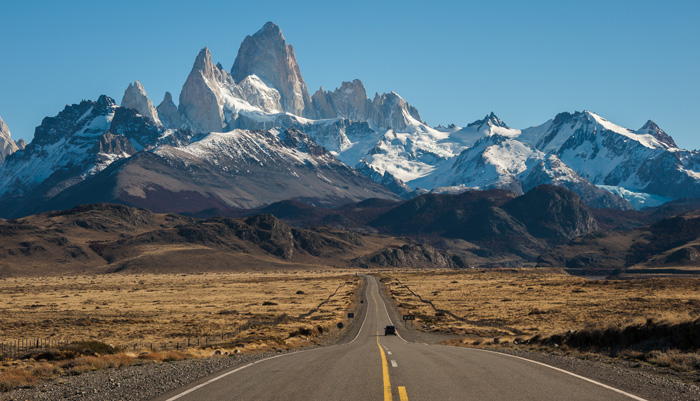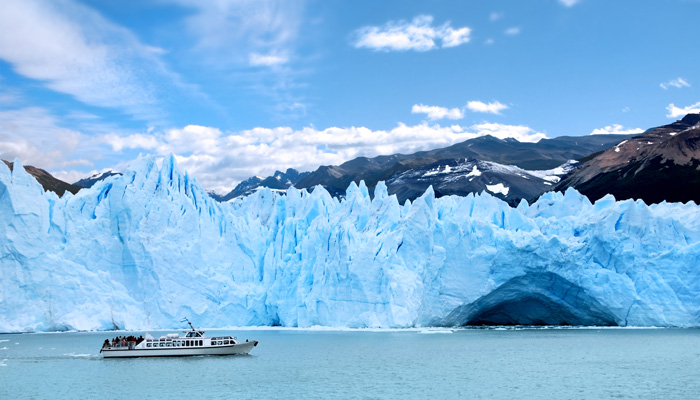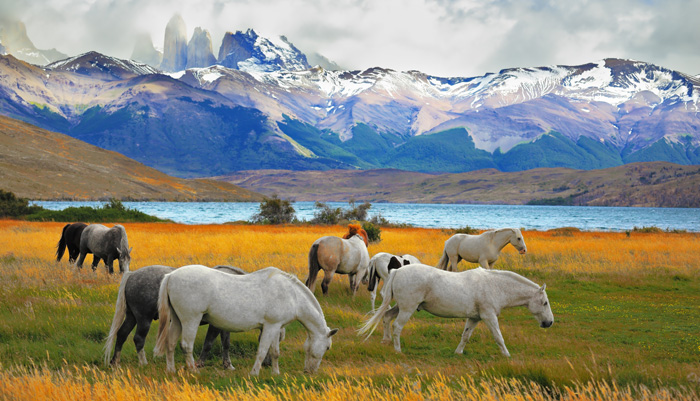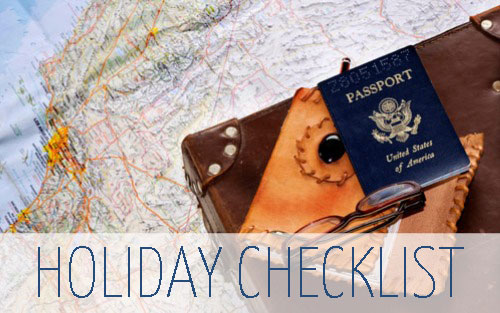Trek the Jagged Coast of Patagonia
As dramatic as it is remote, discover the secrets of Patagonia.
Patagonia. Even the name conjures up a sense of adventure and mystery, and for those who've dreamed of visiting this vast and barren-yet-beautiful region, the reality will not disappoint. Ideal for hikers who want a reward as well as a challenge, Chilean Patagonia is where some of the region's best-kept secrets are hidden.
Chilean Patagonia: A World of Natural Wonders
Patagonia is famed primarily for its spectacular natural beauty, and this scenic appeal is intensified on the fragmented Western coastline where sea meets rocky Chilean land. In contrast to the wider expanse of land you'll encounter on the Argentinian side, the section of Patagonia located in Chile is so narrow that it's possible in parts to see the Andes and sea at the same time: two spectacular vistas for the price of one.
Destinations don't get more remote than the uninhabited islands and deserted fields of Southern Patagonia, so for those who want to experience the world as if untouched by mankind, this is one of the last remaining opportunities to do so. Ordinary life recedes further into the background with every step you take, as you navigate craggy mountains, abandoned roads and bubbling streams. While humans will be thin on the ground, you can expect to see some truly extraordinary animal life on your trek - from grey foxes and llamas to indigenous species like the Patagonian Mara - a large rodent that looks like large rabbit or small deer. This is a place of discovery, where nothing is quite what it seems.
Planning your Patagonian Adventure
A big advantage of visiting a location as remote as Patagonia is that you won't have to worry about beating the crowds, as there is simply no mass tourism here. When you choose to travel will largely be dictated by the weather, so if you hope to trek in mild temperatures, you should visit during the summer months between December and February. A comfortable 15 degrees is the average during this period, but the summer months can also be the most windy, with gusts reaching up to 120 miles an hour.
Many hikers choose for this reason to visit during the cooler spring months (October and November), when things are less prone to getting wild and windy, while some even favour the Patagonian winter (June and July), when temperatures dip below freezing and the snowy mountainsides are said to be at their most beautiful.
If you can't decide when to visit Patagonia you might want to think about the type of scenery you want to see: do you want fields of blooming, spring wildflowers or dramatic glaciers sparkling in the winter sun? Whenever you travel the weather can be unpredictable, so it's best to come prepared with clothes that will see you comfortably through all eventualities.
Making the Experience Exceptional
If your dream is to hike the haphazard coast of Patagonia, chances are you're already a bit of an adrenaline junkie, so you'll be pleased to hear that there are plenty of extreme sporting activities to keep you buzzing on your trip. Kayaking, mountain-biking and pony trekking are all particularly popular ways to get around - and these can sometimes work out as the best and most practical ways to navigate the jagged and rocky terrain. Be sure to visit during the summer season to ensure access to a wide range of activities, as many of the courses shut down for the quiet winter months.
For those who just want a chance to gently appreciate the world at its most impressive, there's no shortage of excursions to places that verge on the weird and wonderful. The Marble Caves of Chile Chico on General Carrera Lake are perhaps the most remarkable of all: carved into solid marble monoliths that have been shaped by waves over a period of 6,000 years, there is nothing quite like these structures anywhere else on earth. On a calm and clear day you can actually go inside the caves in a kayak or other small boat, to experience their cathedral-like interiors for yourself.
Chilean Patagonia's dramatic coastline may be remote, but it nooks and crannies reveal a wealth of natural wonders, best seen by those prepared to pull on their walking boots and set out with a sense of adventure and a lust for the unknown. If this sounds like your kind of holiday, make Patagonia a priority on your travel bucket list.
If you enjoyed this post like us on Facebook and follow us on Twitter or Google+.
Written by Abi Silvester, a London-based writer and editor with a passion for great food, fine wine, coffee and cats; always planning my next trip! Follow her on Twitter.
comments powered by DisqusLatest posts
-
Why people set things on fire on the longest night of the year
December 18, 2025 10:51:50 am -
New year new holiday
December 16, 2025 01:13:12 pm -
Christmas traditions you literally won't believe
December 12, 2025 10:31:55 am -
Add these spooky destinations to your Halloween bucket list
October 23, 2025 04:00:31 pm -
Survive long-haul flights with these pro travel tips
October 16, 2025 10:45:02 am



.png)


